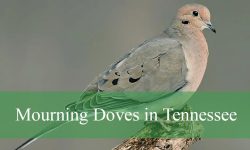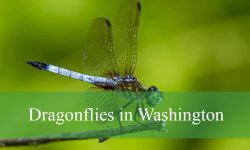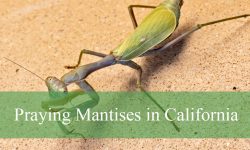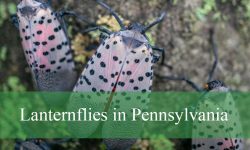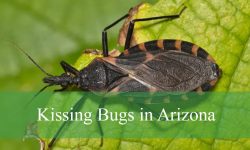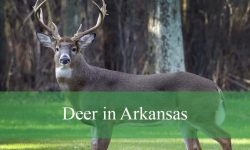Maine is known for its diverse landscapes, ranging from dense forests and wetlands to rugged coastlines. This variety of habitats provides the perfect environment for many colorful bird species to thrive throughout the entire year.
Whether you enjoy birdwatching in your own backyard, exploring local parks, or visiting natural reserves, Maine offers plenty of opportunities to spot vibrant and beautiful birds. You don’t need to wait for the spring migration to see a splash of color in the wild.
In this guide, we will highlight some of the most colorful birds that can be seen in Maine year-round. These species bring charm and life to the state’s natural beauty, no matter the season.
Why Maine Is Perfect for Year-Round Birdwatching
Maine’s diverse and varied habitats create an ideal environment for a wide range of resident bird species that remain throughout all seasons. From dense mixed forests and sprawling wetlands to rocky coastlines and open meadows, the state offers a mosaic of ecosystems where birds can find ample food, shelter, and nesting sites year-round. This rich variety of habitats supports both common backyard birds and more elusive woodland and coastal species, making Maine a hotspot for bird enthusiasts.
Winter in Maine, although cold and snowy, provides unique birdwatching opportunities. Hardy species such as Black-capped Chickadees, Downy and Hairy Woodpeckers, and Red-breasted Nuthatches thrive during this season. Many of these birds are adapted to survive the harsh weather by caching food and fluffing their feathers for insulation, allowing birdwatchers to observe their fascinating behaviors up close. Snow also creates a beautiful backdrop that makes spotting brightly colored birds like the Northern Cardinal especially rewarding.
As the seasons change, so does the diversity of birds you can observe. Spring and fall migrations bring numerous warblers, sparrows, and other songbirds passing through Maine’s forests and wetlands, while summer showcases breeding residents with vibrant plumage and active courtship displays. This dynamic seasonal variation ensures that birdwatching in Maine remains fresh and exciting year-round, with each visit offering new sights and sounds.
Thanks to this abundance of resident species and migratory visitors, Maine has rightfully earned its reputation as a birdwatcher’s paradise. Whether you are a seasoned birder or a casual nature lover, the state’s year-round birdwatching opportunities offer endless chances to connect with nature and enjoy the beauty of wild birds in their natural habitats.
Vibrant Bird Species to Watch in Maine Throughout the Year
Northern Cardinal (Cardinalis cardinalis)
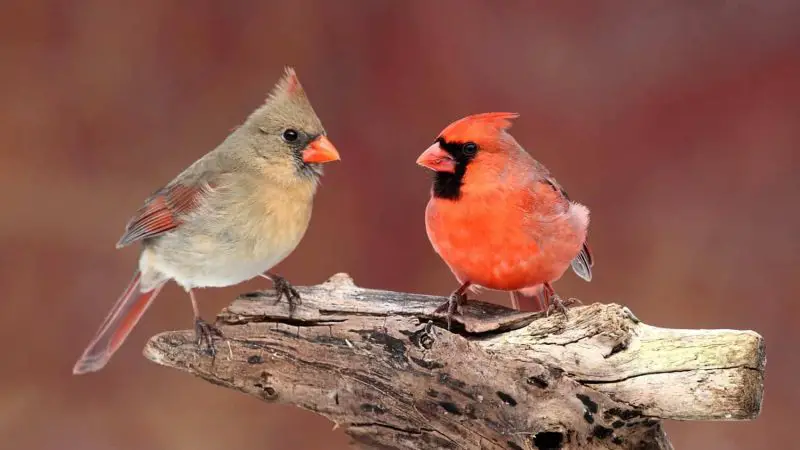
The Northern Cardinal is one of the most recognizable and colorful birds in Maine, especially the striking bright red males. Their vivid red plumage contrasts beautifully against snowy winter landscapes, making them a favorite among birdwatchers. The males have a distinctive crest on their heads and a black mask around the face that highlights their sharp, cone-shaped orange beaks.
Females of the species have more subdued coloring, featuring warm brown feathers with tinges of red on the wings, tail, and crest. This subtle coloration provides good camouflage among shrubs and trees while still showing hints of the species’ characteristic red. Both sexes have a medium-sized body, about 8 to 9 inches in length.
Northern Cardinals are common visitors to backyard feeders in Maine, especially during colder months when natural food sources are scarce. They primarily feed on seeds, grains, and fruits, and they are often seen perched on shrubs or small trees near feeders. Their clear, whistled songs can be heard throughout the year, and they often sing from prominent perches.
In Maine, Northern Cardinals prefer habitats with dense shrubbery, wood edges, and gardens. They thrive in suburban areas as well as in forested patches, adapting well to human presence. Their year-round residency means birdwatchers can enjoy spotting these vibrant birds during all seasons.
Black-capped Chickadee (Poecile atricapillus)
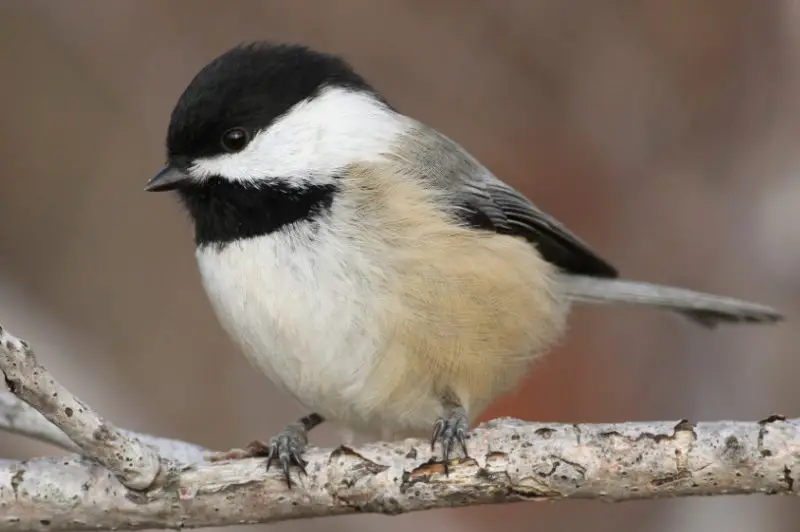
The Black-capped Chickadee is a small but striking bird easily identified by its black cap and bib contrasted sharply against white cheeks. Its soft gray back and wings, combined with a buffy underside, make it a charming addition to Maine’s bird community. Measuring about 4.5 to 5 inches, chickadees are tiny but bold birds.
Known for their curious and active behavior, Black-capped Chickadees frequently visit bird feeders, especially those offering sunflower seeds and suet. They move quickly and nimbly among tree branches and shrubs, often flicking their tails and calling a distinctive “chick-a-dee-dee-dee” song that gives the bird its name.
These birds are well adapted to Maine’s cold winters and remain active year-round. They have a remarkable ability to hide food in caches to eat later during harsh conditions. Their social nature means they often join mixed flocks in the fall and winter to increase foraging success and avoid predators.
Black-capped Chickadees thrive in a variety of habitats throughout Maine, including deciduous and mixed forests, parks, and suburban backyards. Their adaptability and friendly nature make them a favorite for birdwatchers who enjoy seeing these lively little birds up close.
Blue Jay (Cyanocitta cristata)
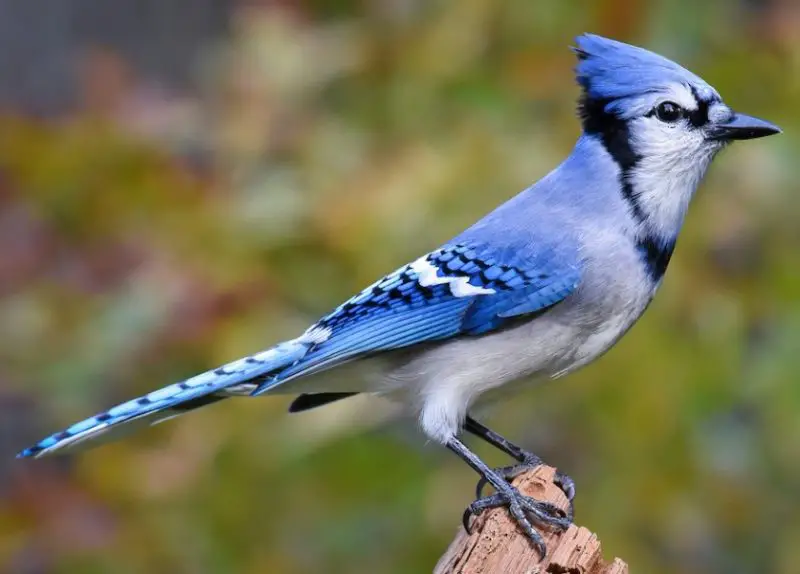
The Blue Jay is a bold and beautiful bird, easily recognizable by its vibrant blue feathers combined with white and black markings on its wings, tail, and face. The crest on its head can be raised or lowered depending on mood or alertness, adding to its expressive appearance. Adult Blue Jays are about 9 to 12 inches long, making them one of the larger songbirds in Maine.
Blue Jays are intelligent and resourceful birds, known for their complex vocalizations, which include a wide range of calls, from harsh “jay-jay” sounds to mimicking other birds and even some mammals. Their loud calls often announce their presence in forests and backyards alike.
In Maine, Blue Jays are frequent visitors to suburban yards and forest edges, where they forage for acorns, nuts, seeds, and occasionally insects or eggs. They are known to cache food to eat later, helping oak trees by inadvertently planting acorns. Their boldness sometimes leads them to chase away smaller birds from feeders or nests.
This species is a year-round resident in Maine and adapts well to various habitats, including deciduous forests, parks, and urban areas. Their striking appearance and lively behavior make them a favorite among birdwatchers and nature enthusiasts.
Downy Woodpecker (Picoides pubescens)
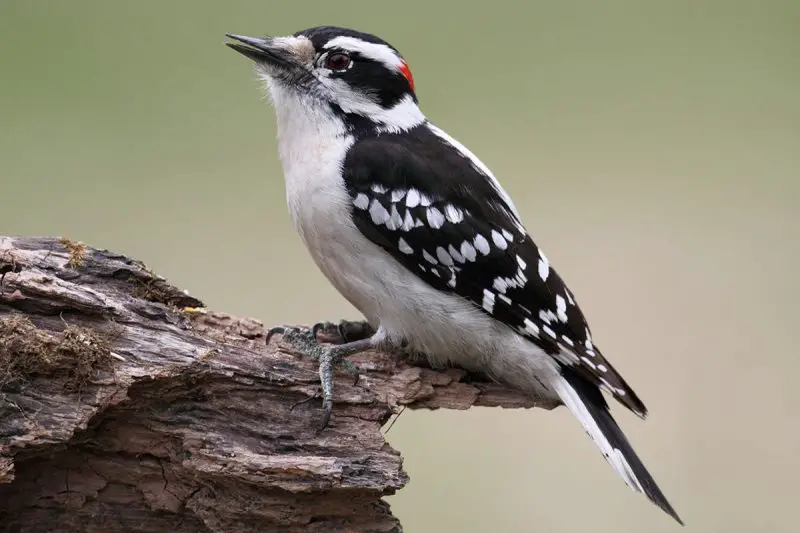
The Downy Woodpecker is the smallest woodpecker species in Maine, measuring around 6 to 7 inches long. It sports a classic black-and-white plumage with white underparts, black wings dotted with white spots, and a white back stripe. Males have a small red patch on the back of their heads, which females lack, aiding in easy gender identification.
These woodpeckers are frequently seen pecking on tree trunks and branches, searching for insects hiding under bark. They also readily visit suet feeders in backyards, especially during colder months when insects are less available. Their sharp, rapid drumming helps them communicate and establish territories.
Downy Woodpeckers are highly adaptable and occupy a variety of wooded habitats throughout Maine, including deciduous forests, mixed woodlands, orchards, and suburban neighborhoods. Their ability to thrive near human settlements makes them common and well-loved among local birdwatchers.
Throughout the year, Downy Woodpeckers remain active in Maine, often seen hopping vertically along tree trunks or hanging upside down on branches. Their distinctive call is a sharp, rattling “pik,” which bird enthusiasts often learn to recognize during hikes or backyard birdwatching sessions.
White-throated Sparrow (Zonotrichia albicollis)
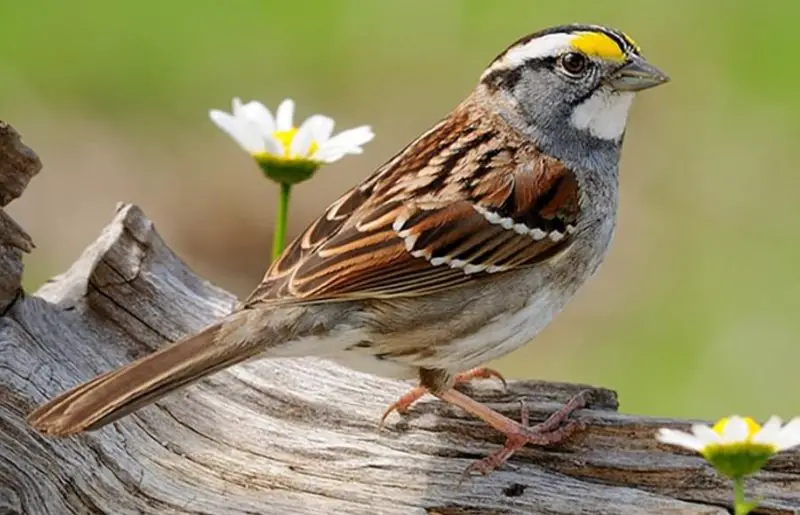
The White-throated Sparrow is easily recognized by the striking white stripes on its head, contrasting with black and brown patterns. Its bright white throat patch is a key feature that gives this species its name. This medium-sized sparrow measures about 6 to 7 inches in length.
These birds are well known for their clear, melodious song that carries far across forests and fields. Their distinctive whistle, often transcribed as “Oh sweet Canada, Canada, Canada,” is a welcome sound in Maine’s spring and fall. They tend to forage on the ground, scratching leaf litter to find seeds and insects.
White-throated Sparrows favor mixed woodlands, brushy areas, and forest edges across Maine. During migration seasons, they can be found in thickets and gardens, while some remain in the state throughout winter. Their adaptability to different habitats makes them common visitors to bird feeders.
In Maine, these sparrows are especially noticeable during early mornings and late afternoons. Their calm demeanor and beautiful song make them a favorite among both casual observers and serious birders.
Tufted Titmouse (Baeolophus bicolor)
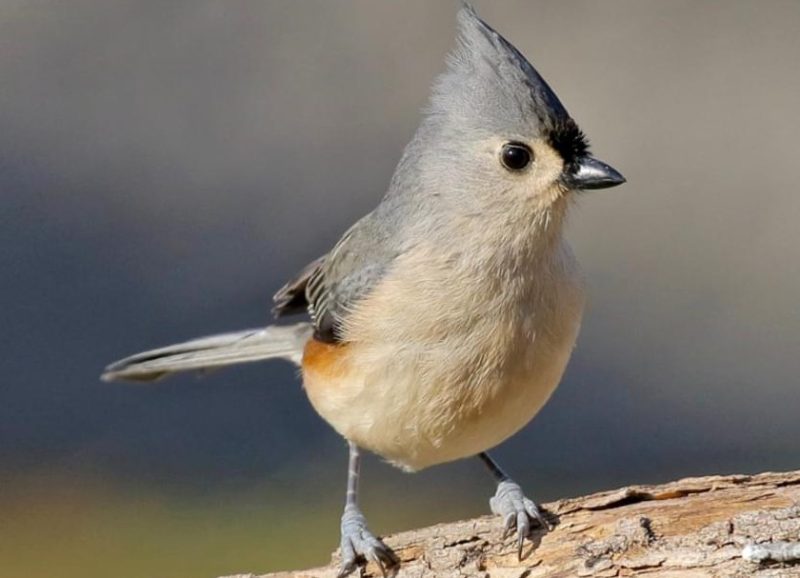
The Tufted Titmouse is a small songbird notable for its soft gray plumage and distinctive small crest or “tuft” on its head. It has a white belly with some buff coloring on the sides and large, dark eyes that give it a curious expression. Typically about 5.5 to 6 inches long, it is easy to spot due to its unique head shape.
This species is highly active and inquisitive, often seen hopping along branches or hanging upside down while searching for insects, seeds, and nuts. Their calls include a clear, whistled “peter-peter-peter,” which is commonly heard in Maine’s woodlands and suburban areas.
Tufted Titmice prefer deciduous and mixed forests but readily visit backyard feeders, especially in winter when natural food is scarcer. They often form mixed feeding flocks with chickadees and nuthatches to increase foraging efficiency.
In Maine, the Tufted Titmouse is a year-round resident. Its adaptability to different environments and approachable nature make it a delight to watch throughout the seasons.
Red-breasted Nuthatch (Sitta canadensis)
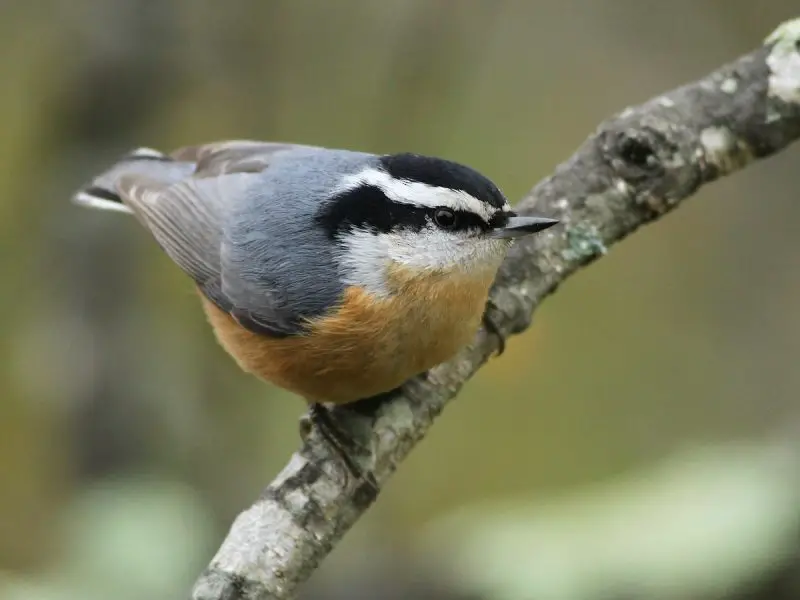
The Red-breasted Nuthatch is a small, agile bird distinguished by its blue-gray upperparts and rusty reddish underparts. It has a black stripe through its eyes and a white stripe above, giving it a masked appearance. Measuring about 4 to 5 inches, it is known for its acrobatic ability to climb down tree trunks headfirst.
This nuthatch uses its strong bill to probe bark crevices for insects and seeds, often wedging large seeds into bark cracks to hammer them open. Its call is a nasal “yank-yank” sound, frequently heard echoing through Maine’s coniferous forests.
In Maine, the Red-breasted Nuthatch inhabits spruce, fir, and mixed woods, thriving in cool northern climates. While primarily a permanent resident, it may move southward in some winters if food is scarce.
This species’ lively behavior and distinctive markings make it a favorite among birdwatchers who enjoy spotting woodland birds up close.
American Goldfinch (Spinus tristis)
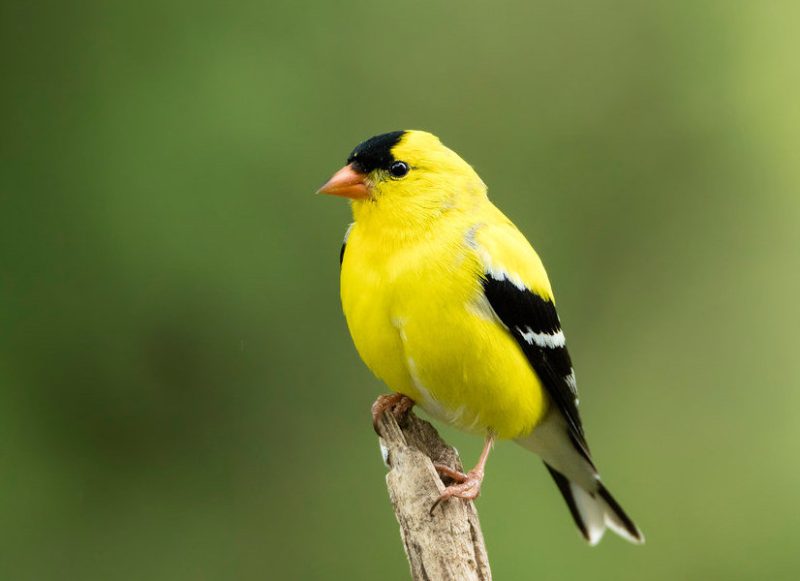
The American Goldfinch is known for its brilliant yellow plumage during the summer months, making it one of Maine’s most vibrant backyard birds. Males display bright yellow feathers with black wings and a black forehead, while females and winter birds show a duller olive-yellow color.
These finches feed mainly on seeds, especially favoring thistle and sunflower seeds, and are frequent visitors to backyard feeders throughout the year. Their flight is undulating and buoyant, often accompanied by a soft, twittering call.
During Maine’s colder months, the American Goldfinch molts into a more muted plumage, but remains present in the region. They prefer open fields, gardens, and forest edges, often forming small flocks in fall and winter.
The cheerful song and vivid summer colors of the American Goldfinch make it a favorite among bird enthusiasts in Maine year-round.
Hairy Woodpecker (Leuconotopicus villosus)
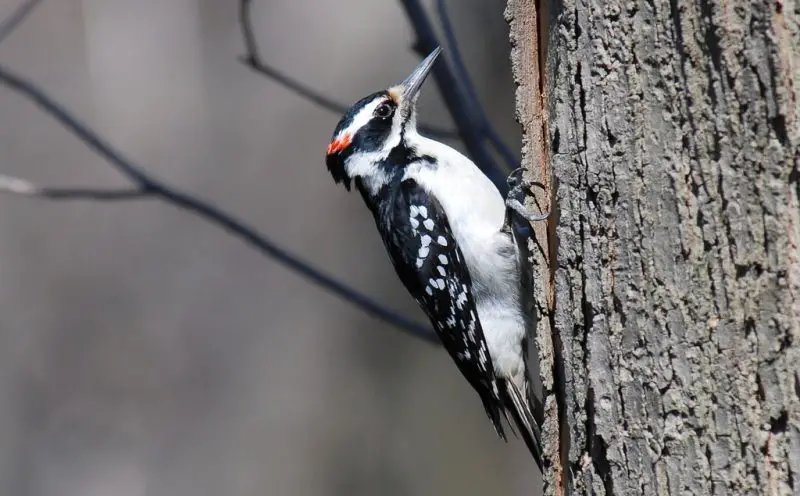
The Hairy Woodpecker is similar in appearance to the Downy Woodpecker but noticeably larger, measuring about 9 to 10 inches in length. It has striking black and white plumage, with bold white spots on its black wings and a prominent white back stripe. Male Hairy Woodpeckers feature a small red patch on the back of their heads, which females lack.
This species is an expert at drumming on tree trunks and branches to find insects hiding beneath the bark. They use their strong, chisel-like beaks to excavate holes for nesting and foraging. Hairy Woodpeckers also visit backyard suet feeders, especially during colder months when natural food sources are limited.
In Maine, Hairy Woodpeckers inhabit mature forests, woodlots, and wooded suburban areas. Their preference for larger trees with thick bark helps distinguish their habitat from some other woodpeckers. They remain active year-round and are a common sight for birdwatchers exploring forested areas.
Their sharp, repeated drumming and loud calls make them easily detectable in their environment. Bird enthusiasts often enjoy watching their energetic foraging behavior and distinctive plumage.
Eastern Bluebird (Sialia sialis)
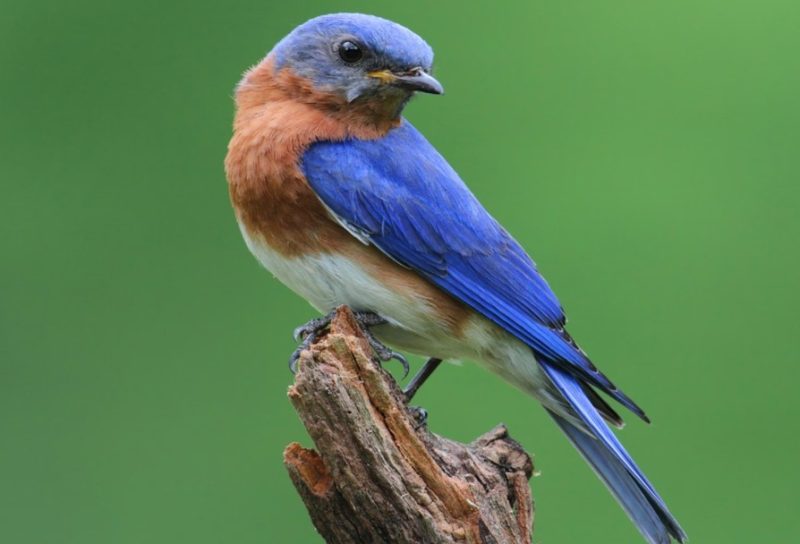
The Eastern Bluebird is a medium-sized thrush known for its vivid blue upperparts and warm reddish-orange breast, especially striking during spring and summer. Males display the brightest colors, while females have a more muted gray-blue tone. Bluebirds measure about 7 inches long and have a gentle, rounded appearance.
In Maine, the peak time to see Eastern Bluebirds is during the breeding season in spring and summer when their colors are most vibrant. Occasionally, some individuals linger into early fall before migrating south for winter. They prefer open fields, meadows, and edge habitats with scattered trees and nesting boxes.
Eastern Bluebirds feed primarily on insects and berries, often perching on wires or posts as they hunt. They readily use nest boxes provided by birdwatchers, which has helped their populations recover from past declines.
Their melodious songs and bright colors make them a favorite species among bird lovers in Maine during the warmer months.
Common Redpoll (Acanthis flammea)
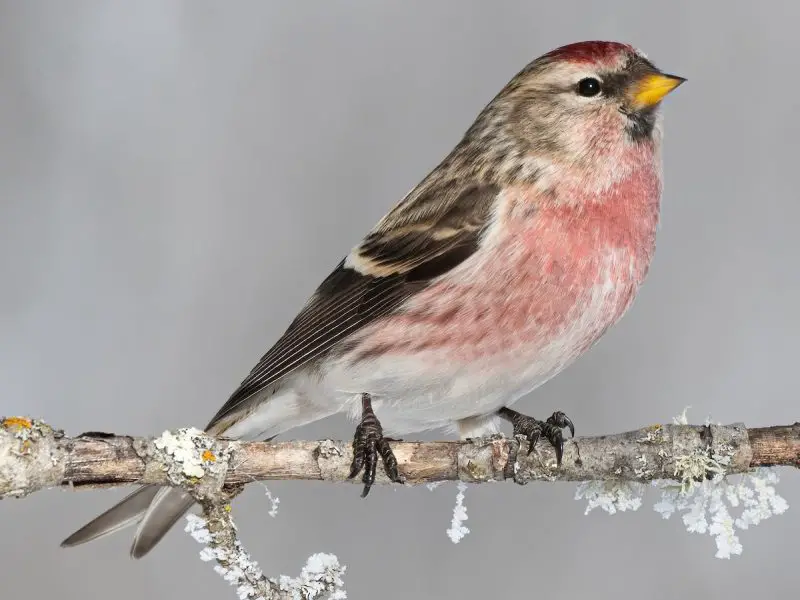
The Common Redpoll is a small, lively finch about 4.5 inches long, easily identified by the bright red patch on its forehead. Its overall plumage is streaky brown and white, with a slightly notched tail and a small, conical bill adapted for seed eating. During the winter months, these birds flock in large numbers, creating a lively presence.
Common Redpolls migrate into Maine during the cold season, arriving when northern food supplies dwindle. They thrive in open woodlands, brushy areas, and even suburban backyards where seed feeders are available. Their ability to survive harsh winters is aided by their efficient metabolism and the ability to store fat.
They have a cheerful, high-pitched twittering call and often feed on birch and alder seeds. Watching a flock of redpolls is a delightful winter birdwatching experience in Maine.
Though temporary visitors, Common Redpolls add beautiful color and energy to Maine’s winter birdlife.
Tips for Spotting Year-Round Birds in Maine
Birdwatching in Maine can be an incredibly rewarding experience, especially when you know how to attract and spot colorful year-round residents. One of the most effective ways to invite a variety of birds into your backyard or nearby areas is by setting up bird feeders stocked with seeds and suet. Black oil sunflower seeds are particularly popular among many species, including Northern Cardinals and Blue Jays. Suet feeders are especially helpful during colder months, providing birds like woodpeckers and chickadees with much-needed energy to survive Maine’s harsh winters.
Exploring local parks, forests, and coastal areas is another excellent way to discover Maine’s diverse birdlife. State parks such as Acadia National Park and public forests offer a range of habitats where resident birds thrive year-round. Coastal regions provide opportunities to spot seabirds and waterfowl that remain in the area throughout the year. Birdwatching trails and nature preserves are often equipped with observation points or hides, allowing you to quietly observe birds without disturbing them.
To improve your bird identification skills and increase your chances of spotting elusive species, it’s highly recommended to use binoculars during your outings. A good pair of binoculars will help you see fine details like plumage colors and markings, which are essential for distinguishing similar species. Additionally, carrying a regional bird guidebook or a reliable birding app tailored to Maine’s birds can assist you in quickly identifying what you see and learning more about their behaviors and habitats.
Finally, patience and quiet observation are key. Birds can be shy or easily startled, so moving slowly and minimizing noise will greatly enhance your birdwatching success. Regular visits to the same locations at different times of day or across seasons will also increase the variety and number of birds you can observe year-round in Maine.
Conclusion
Maine offers birdwatchers the chance to enjoy beautiful, colorful birds throughout the year. From the bright Northern Cardinal to the clever Blue Jay, these resident species add charm and color to every season. Whether you’re a beginner or experienced birder, keeping an eye out for these birds can make your Maine outdoor adventures even more rewarding.

